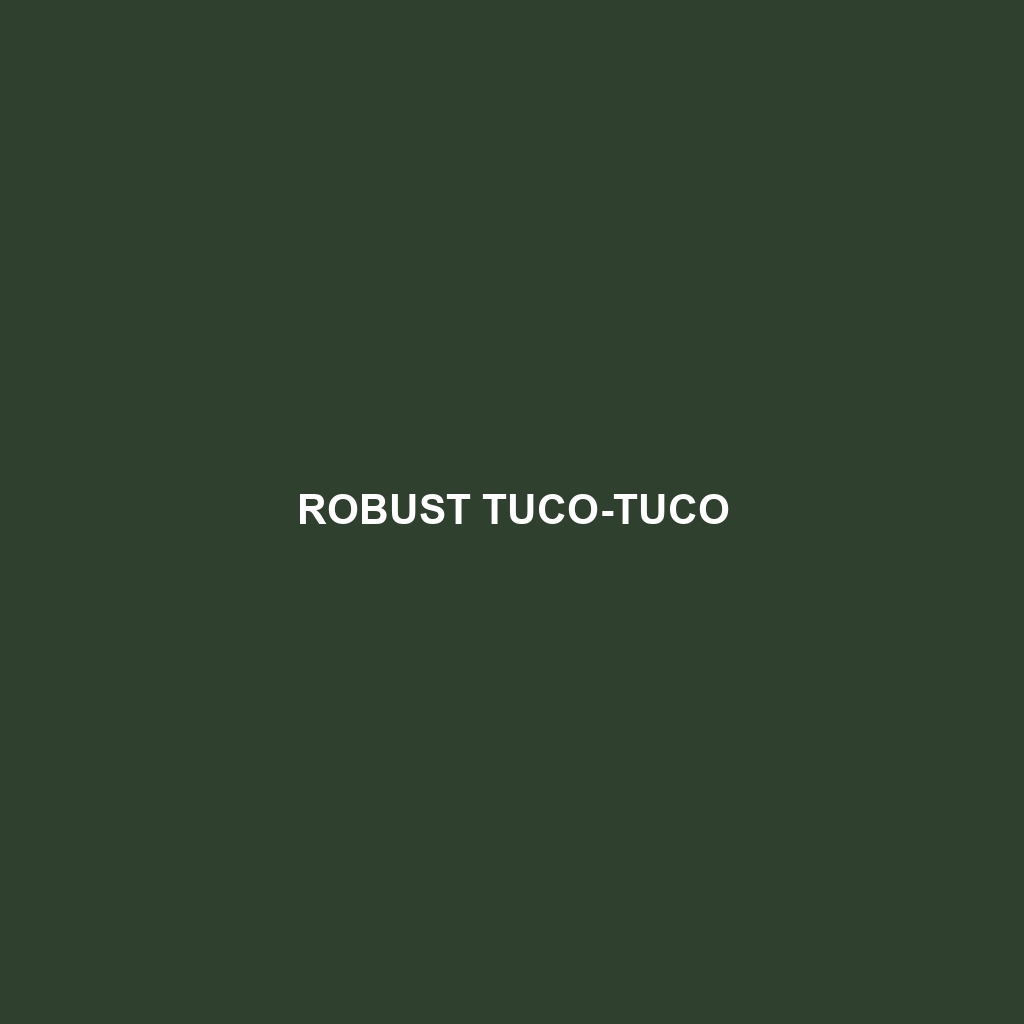Robust Tuco-tuco: A Comprehensive Species Description
Common Name: Robust Tuco-tuco
Scientific Name: Ctenomys robustus
Habitat
The Robust Tuco-tuco is primarily found in the grasslands of Argentina and Bolivia. This burrowing rodent prefers sandy soils that facilitate tunnel construction, typically inhabiting regions with sparse vegetation and open landscapes. Their habitat often includes areas adjacent to rivers and lakes, providing the necessary moisture for their survival.
Physical Characteristics
The Robust Tuco-tuco is characterized by a robust body that can measure approximately 25 to 32 centimeters in length. Its fur is coarse and usually ranges from light brown to dark brown, with a lighter underbelly. The species displays distinctive features such as short, powerful limbs adapted for digging and large, chisel-like incisors which constantly grow throughout their life. Their rounded ears and small eyes provide them with excellent hearing, aiding in their survival from predators.
Behavior
Typically, the Robust Tuco-tuco is known for its solitary and territorial nature. These rodents are predominantly nocturnal, and they exhibit fascinating burrowing behaviors, creating extensive tunnel networks that can span several meters underground. Their vocalizations, which include a range of chirps and whistles, serve as communication methods during mating or to signal alarm.
Diet
The diet of the Robust Tuco-tuco primarily consists of herbaceous plants, roots, tubers, and grasses. They are known for their unique feeding habits, using their powerful front teeth to excavate and consume underground plant parts. Their foraging activities contribute significantly to the aeration of the soil, enhancing the growth of local flora.
Reproduction
Robust Tuco-tucos are seasonal breeders, with mating typically occurring in the spring. After a gestation period of around 60 days, the female gives birth to a litter of 2 to 6 offspring. The young are born hairless and blind but develop rapidly, becoming independent within a few weeks. Parental care is provided primarily by the mother, who protects and nurtures the young until they can fend for themselves.
Conservation Status
Currently, the Robust Tuco-tuco is classified as “Least Concern” by the International Union for Conservation of Nature (IUCN). However, habitat destruction and changes in land use pose potential threats to their populations. Continued monitoring is essential to ensure they do not transition to a more vulnerable status.
Interesting Facts
The Robust Tuco-tuco possesses remarkable adaptations for underground living, including highly developed forelimbs and a keen sense of smell. Interestingly, they can dig through various soil types, demonstrating their adaptability. Additionally, they are often cited in ecological studies as indicators of soil health due to their tunneling behaviors.
Role in Ecosystem
As primary consumers, Robust Tuco-tucos play a vital role in their ecosystem by contributing to soil aeration and nutrient cycling. Their burrowing activities affect the distribution of plant species and provide refuge for other small animals. Through their feeding habits, they help maintain the balance of their grassland habitats and serve as prey for larger predators, thus linking multiple trophic levels within their environment.
